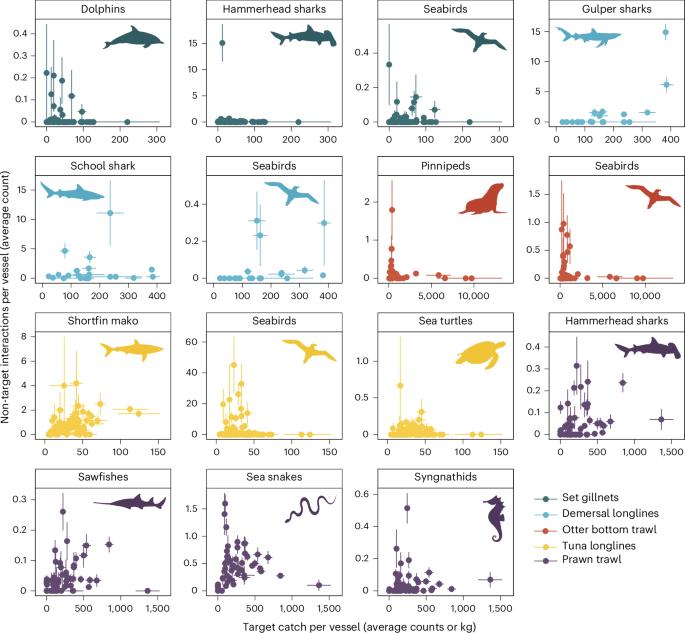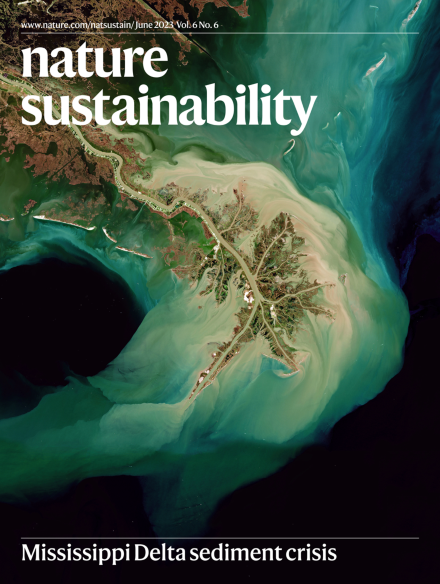Fishery bycatch rates largely driven by variation in individual vessel behaviour
IF 27.1
1区 环境科学与生态学
Q1 ENVIRONMENTAL SCIENCES
引用次数: 0
Abstract
Fisheries bycatch continues to drive the decline of many threatened marine species such as marine mammals, seabirds, sea turtles and sharks. Management frameworks typically address non-target catch with fleet-level controls on fishing. Yet, individual operators differ in their fishing practices and efficiency at catching fish. If operators have differing abilities to target, they should also have differing abilities to avoid bycatch. To evaluate the generality of this pattern, we analysed variations in threatened species bycatch among individual operators from five industrial fisheries in Australia representing different geographic areas, gear types and target species. The individual vessel is a significant predictor of interaction rates in all 15 cases, including species that represent high or low costs to fishers, or have economic value. Encouragingly, we found high-target and low-bycatch vessels in all five fisheries, including gears often perceived as indiscriminate in the species they catch. The patterns of variation we find in the Australian fisheries data highlight the potential to reduce bycatch using measures focused on specific performance groups of individuals, offering an alternative approach that can complement fleet-wide controls. Fisheries bycatch, responsible for the decline of many threatened marine species, is managed with fleet-level controls, but individual operators’ ability to avoid bycatch differs. This study analyses variations in threatened species bycatch among operators from industrial fisheries in Australia.

副渔获率主要受个别船只行为变化的影响
渔业副渔获物继续导致许多濒危海洋物种的数量减少,如海洋哺乳动物、海鸟、海龟和鲨鱼。管理框架通常通过船队层面的捕捞控制来处理非目标捕捞。然而,个体经营者的捕鱼方法和捕鱼效率各不相同。如果操作人员有不同的目标能力,他们也应该有不同的能力来避免副渔获物。为了评估这一模式的普遍性,我们分析了澳大利亚五个工业渔场的个体经营者在不同地理区域、渔具类型和目标物种中受威胁物种副渔获量的变化。在所有15种情况下,个体船只是相互作用率的重要预测指标,包括对渔民来说成本高或低或具有经济价值的物种。令人鼓舞的是,我们在所有五个渔场都发现了高目标和低副渔获的船只,包括那些通常被认为是不分青红皂白捕捞的船只。我们在澳大利亚渔业数据中发现的变化模式强调了使用针对特定绩效个体群体的措施来减少副渔获物的潜力,提供了一种可以补充整个船队控制的替代方法。渔业副渔获物是造成许多濒危海洋物种数量下降的原因,目前通过船队层面的控制进行管理,但个体经营者避免副渔获物的能力各不相同。本研究分析了澳大利亚工业渔业经营者中受威胁物种副渔获的变化。
本文章由计算机程序翻译,如有差异,请以英文原文为准。
求助全文
约1分钟内获得全文
求助全文
来源期刊

Nature Sustainability
Energy-Renewable Energy, Sustainability and the Environment
CiteScore
41.90
自引率
1.10%
发文量
159
期刊介绍:
Nature Sustainability aims to facilitate cross-disciplinary dialogues and bring together research fields that contribute to understanding how we organize our lives in a finite world and the impacts of our actions.
Nature Sustainability will not only publish fundamental research but also significant investigations into policies and solutions for ensuring human well-being now and in the future.Its ultimate goal is to address the greatest challenges of our time.
 求助内容:
求助内容: 应助结果提醒方式:
应助结果提醒方式:


